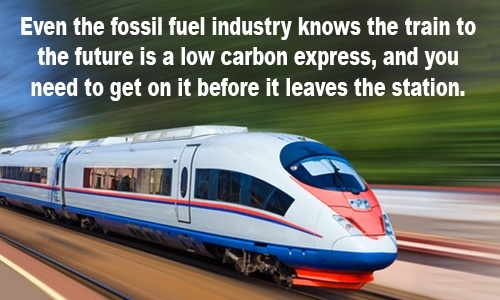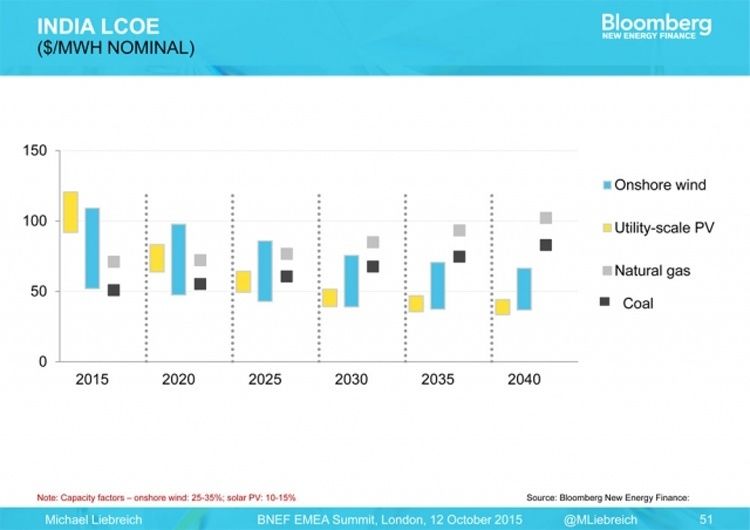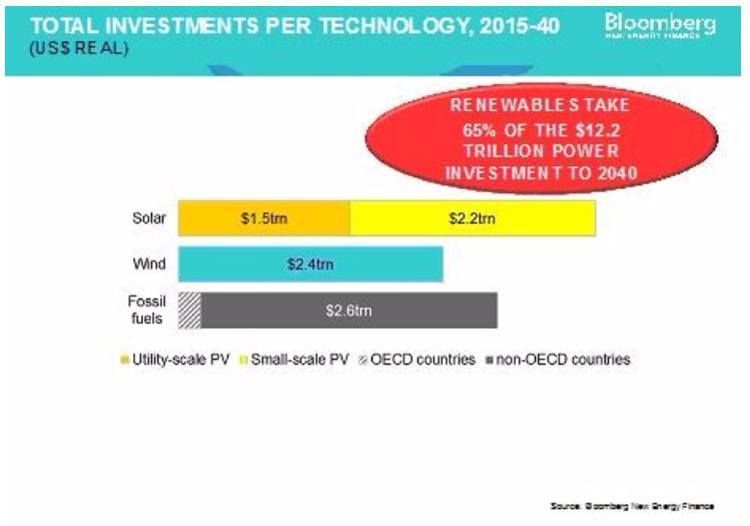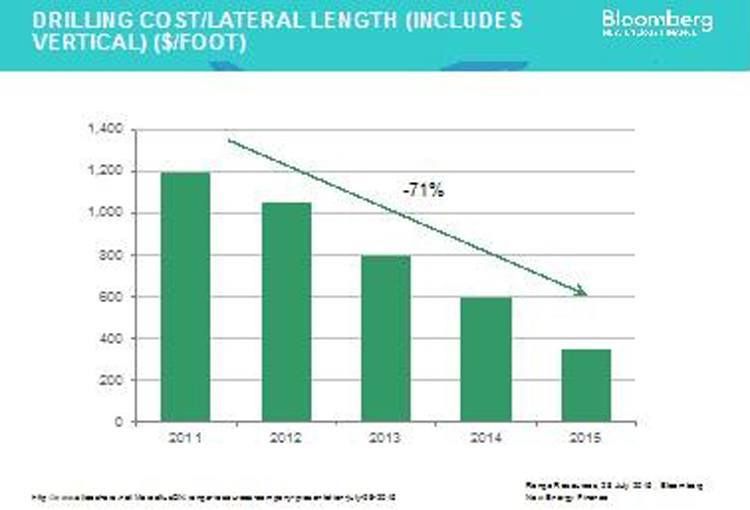
It’s Time to Jump on the Train to the Future: All Aboard the Low Carbon Express

This same week opened with the Bloomberg New Energy Finance (BNEF) regional summit at a stunningly refurbished old brewery in the City of London. I told my opening panel that the forthcoming 21st Conference of the Parties (COP 21 in UN jargon) will make as much progress as the previous 20 put together. And the question put to the final panel by the moderator is whether or not I am right—a query they deftly evade.
But the intervening two days drive home the likelihood of success in Paris. Even with Europe clean energy investment lagging with its overall economy, on-shore wind now provides the cheapest electrons available in both Britain and Germany.
Europe’s slump is partly driven by a transition pains moving from high cost mechanisms like feed-in-tariffs more efficient tools like reverse auctions.
And the massive European investments from 2010-2013 shaved off the lucrative peak demand loads which made solar panels so lucrative. But having done so, Europe is teed up for the world’s next big task. Even at today’s investment levels, by 2040 a huge fraction of global power will come from variable renewables (wind and solar): Germany 77 percent, China 37 percent, Mexico 32 percent, India 32 percent. (The U.S., BNEF projects, lags at 24 percent because of cheap gas. I think America will in fact catch up).
But this vast influx of clean electrons creates a new investment need: storage and connected transmission to stabilize power supplies and integrate zero cost but variable supply electrons—Europe now becomes the test bed for this phase of the clean energy transition.
Elsewhere clean energy marches on. While the details matter, wind and solar will become cheaper than new build coal and gas everywhere. Michael Liebrich in his keynote flashes a telling quote from Bill Koch: “The coal business in the U.S has kind of died, so we’re out of the coal business,” and points out that compared to 2013, 2015 investment in coal has dropped a stunning 75 percent.
Or here’s India for example:
As a result, BNEF projects that renewables get most of the money:
And even as the raw economics of low-carbon energy are on display here, so too the assertive role of cities, states and companies in embracing clean energy innovation is changing the politics of Paris. The Compact of Mayors has passed the 200 city mark, encompassing almost 4 percent of the world’s population.
These two forces—clean energy’s growing affordability edge, and the bottom up pressure on national governments from cities and the business community—means that fossil fuel interests could longer prevent climate progress simply by leveraging their sheer size to freeze nation state’s from accelerating the shift to the future. Stephen Harper’s government in Canada refused to embrace climate progress, but Canada’s cities—Vancouver, Toronto, Montreal, Edmonton—are racing forward, as are its major provinces—Quebec, Ontario, British Columbia and—very soon, my intelligence suggests, even Alberta. (Now Harper is gone).
Set against these two positive drivers a highly resistant, incumbent fossil fuel complex remains determined to hold on to its market share as long as it can. Coal and Oil have withdrawn from their untenable “never” position. Their next battle ground lies in “when.” The G20 commitment this spring was to decarbonize by “the need of the century.” Climate science has a different calendar—fossils must essentially be gone by 2050. That extra 50 years is, to coal and oil, worth fighting for—and natural gas is oil’s alternative of choice. Their secret weapon? Ever lower prices. Liebrich points out that while the pace of technological progress for wind and solar has been dramatic, so too has been improvements in shale drilling for oil and natural gas.
“People believe that the normal trend is for fossils to get more expensive with occasional dips. But it’s more the norm for them to get cheaper in real terms, with intermittent spikes.” And Liebrich warns that the big losers from climate progress—nations whose economies rely on fossil fuel exports, the Saudi Arabia’s, Venezuela’s, Russia’s and Australia’s of the world—have yet to reveal their back-up strategy.
So price alone will not sweep renewables and clean energy to dominance—it will take the active engagement of energy consumers, whether they are cities, companies or publics. After all, for energy consumers, stranding fossil fuel assets is a big win—because it means something cheaper and better has emerged. So while carbon exporting nations and the fossil fuel producers allied with them remain powerful, their role going forward is clearly defensive—retreat they will, but our challenge is to make that retreat a rout.
This summer is only a start, and Paris will only be a milepost—but it is a very strong start. It is a stunning shift from Copenhagen that 190 nations covering 90 percent of current carbon emissions have now submitted their national emission reduction pledges—some shockingly ambitious, some limp and lame, a few perhaps bogus—but the expectation of climate action is now global, not just confined to the U.S., the EU and Japan. This matters. Johan Rockstrom, a climate scientist who pessimistically argued in 2009 that it was almost too late to pull back from the climate brink, has now concluded that the story is turning around. “We have a paradox unique to our era. On a scientific basis there is more reason to be nervous than ever before. But at the same time there has never before been so much reason for hope.”
There is a palpable sense that the train to the future is a low carbon express, and you need to get on it before it leaves the station.
YOU MIGHT ALSO LIKE
Dalai Lama: Climate Change Is Destroying Tibet’s ‘Roof of the World’
Cities Hold the Key to Ensuring a Climate Safe World
Bill Nye: 5 Simple Things You Need to Know About Climate Change

 233k
233k  41k
41k  Subscribe
Subscribe 


